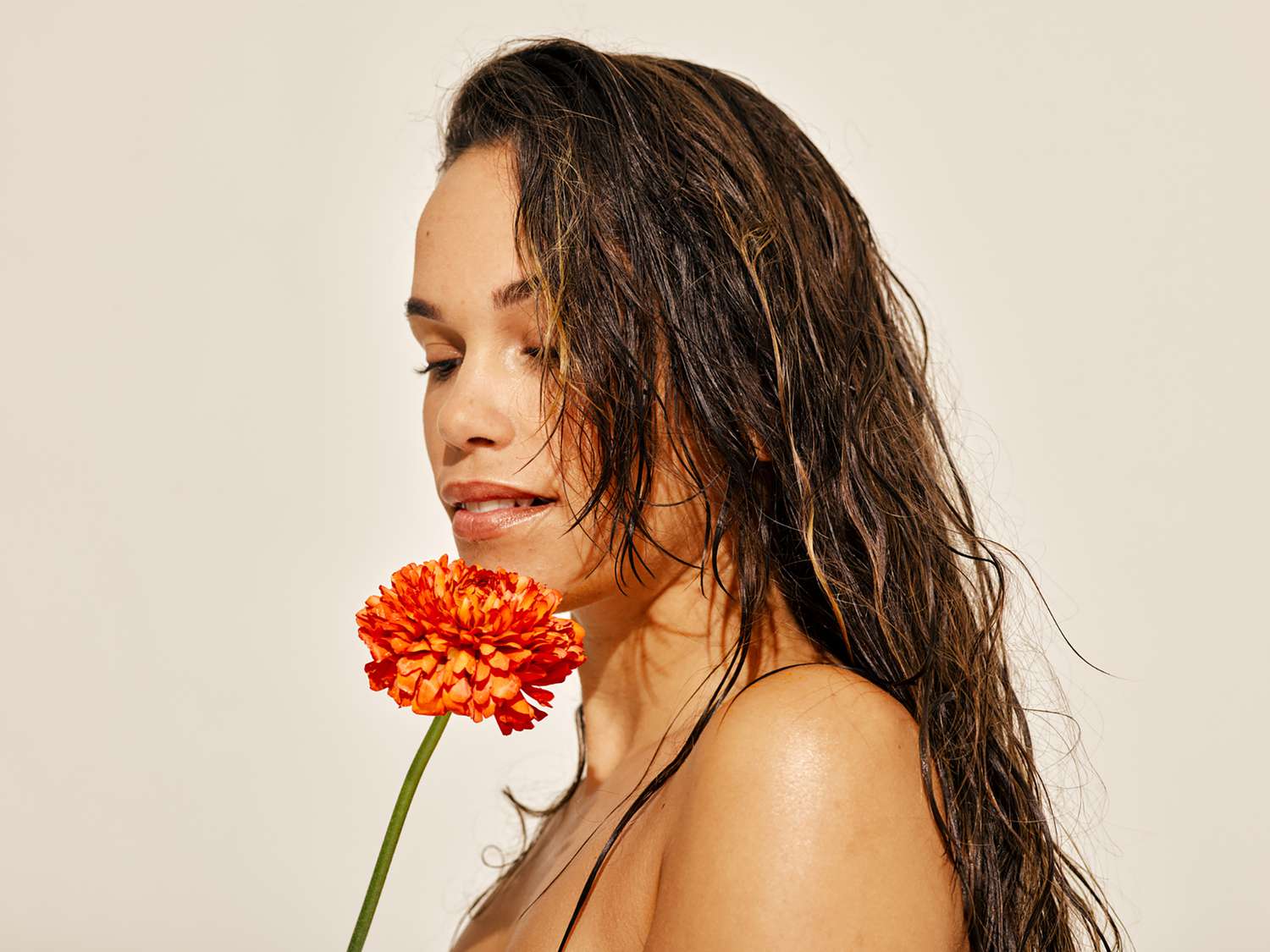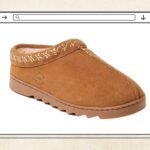Close 
ohlamour studio / Stocksy
In This Article
Can Air Drying Cause Damage? The Benefits of Air Drying How to Air Dry Properly The Benefits of Blow Drying How to Blow Dry Properly The Final Takeaway
Whether it’s because we’re trying out a fluffy new style or realized we washed our hair a little too close to bedtime, most of us have used a blow-dryer on our hair at some point or another. While we (almost) all do it, it’s usually with a nagging little thought in the back of our heads: This is totally jeopardizing my hair health.
Conventional wisdom holds that air drying is preferable to using heat in pretty much every situation. But is that really the case? Could it actually be air-drying that leads to frizzy, broken strands? To find out, we went to hair experts Kerry E. Yates and Jacob Sirianno. Read on for what they had to share about the pros and cons of air drying, including the safest way to do it.
Meet the Experts
- Kerry E. Yates is a trichologist and the founder of Colour Collective, a beauty brand development agency.
- Jacob Sirianno is a hair colorist based in New York City and Los Angeles.
Can Air Drying Cause Damage?
Air drying does not typically cause direct damage, Sirianno says—but it can contribute to issues over time depending on your hair type and environment. “If hair remains wet for extended periods, the hair shaft can swell, making it more vulnerable to breakage,” he explains. “The slower evaporation can also weaken the hair’s inner structure, particularly if the hair is fine or porous.”
Digging in a bit, Sirianno says that each hair strand consists of three layers: the cuticle (outer layer), cortex (middle layer), and medulla (core). The Cell Membrane Complex (CMC) binds the cuticle layers together, playing a crucial role in hair's elasticity and strength. Air drying can cause hair to absorb water for extended periods, potentially weakening the CMC. "When this structure is compromised, hair becomes more susceptible to frizz, split ends, and breakage," he explains. "Consistent moisture retention from air drying can also disrupt the lipid balance, leading to dryness and brittleness."
The Benefits of Air Drying
That being said, there are still many benefits to air drying. They include less heat exposure, retention of natural texture, and time savings in your daily routine. Yates notes that air drying instead of using hot styling tools can help limit damage to the hair's cuticle layers.
How to Air Dry Properly
When air drying:
- Yates advises removing excess moisture from hair (especially at the roots) to reduce drying time and limit any need for heat. This approach helps protect the cuticles, maintaining a smooth surface that keeps hair shiny, healthy, and supple. Consider using products designed for air drying, like a microfiber hair towel.
- “It’s also important to avoid excessive brushing and combing, as this can stress the cuticle,” she adds. “Since wet hair is more fragile, aggressive pulling should be minimized.”
The Benefits of Blow Drying
"In some cases, blow-drying the hair on a lower heat setting can prevent damage caused by excessive water exposure, protecting the CMC layer," says Yates. "However, continuous exposure to high heat can be harmful."
Sirianno concurs, citing studies demonstrating that controlled blow-drying on a low-heat setting can be less damaging than air drying since it reduces the time hair spends in its most fragile, wet state. "Excessive water retention can stress the cuticle layers, while moderate heat exposure evaporates moisture faster, helping to preserve the hair's integrity and reduce breakage," he says.
How to Blow Dry Properly
If you choose to blow dry:
- Proper tools and techniques make a significant difference. Using the right temperature and styling products can seal the cuticle, resulting in smoother, healthier-looking hair.
- Heat protectants are essential for minimizing damage, even when rough drying hair without styling. They create a barrier that reduces heat penetration and locks in moisture. “This is the number one product I recommend if any heat is being applied to the hair,” says Sirianno.
- “Diffusers are ideal for curly or wavy hair,” Sirianno says, as they help distribute heat evenly, reducing direct contact with strands while preserving the natural curl pattern. Additionally, using a nozzle attachment is crucial, as it directs airflow for a smoother cuticle. Without a nozzle, airflow disperses in multiple directions, often leading to increased frizz.
The Final Takeaway
While research indicates air drying can negatively impact hair due to prolonged water exposure, it's important to remember that's a can—not a will. If you prefer to air dry, use tools and products that help dry the hair thoroughly and minimize the time it remains soaking wet. In some cases, blow drying on a low heat setting can prevent damage from prolonged water exposure, but repeated exposure to high heat can still cause damage. So if you prefer blow-drying, stay cautious (and always use a heat protectant).
Article Sources Byrdie takes every opportunity to use high-quality sources, including peer-reviewed studies, to support the facts within our articles. Read our editorial guidelines to learn more about how we keep our content accurate, reliable and trustworthy.
-
Lee Y, Kim YD, Hyun HJ, Pi L quan, Jin X, Lee WS. Hair shaft damage from heat and drying time of hair dryer. Annals of Dermatology. 2011;23(4):455.


